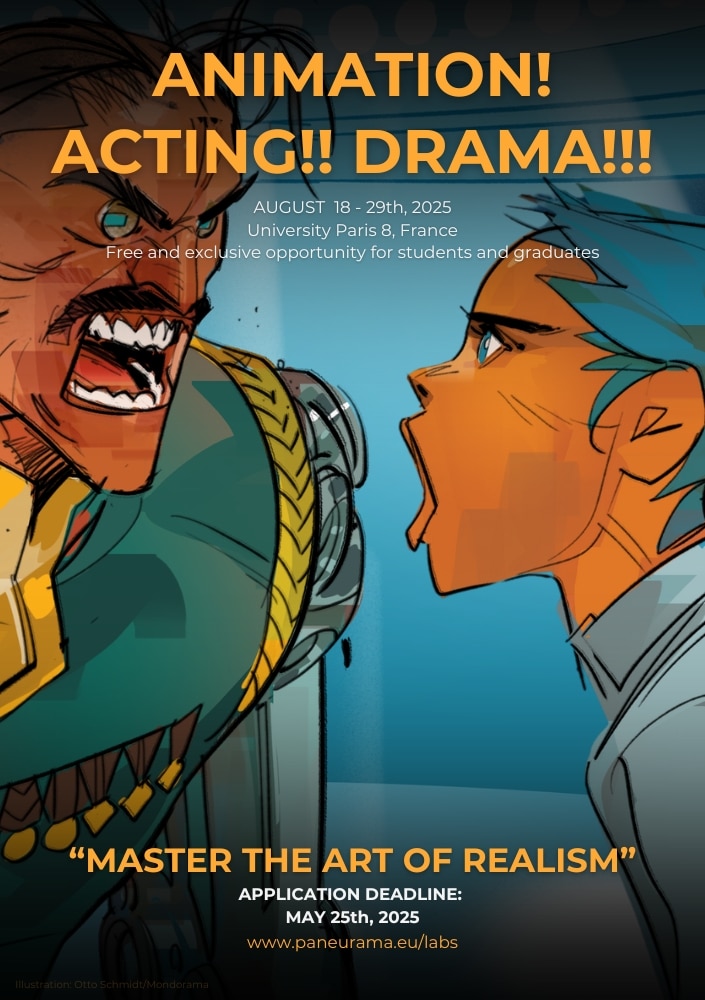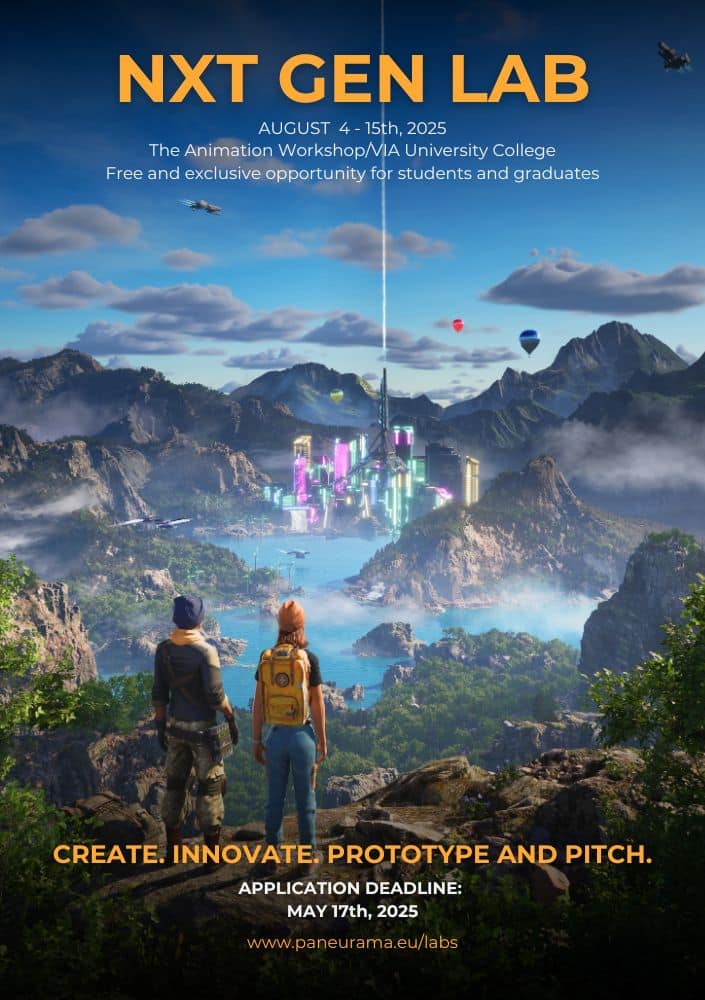We asked our team from the PANEURAMA project to briefly introduce themselves, share the areas they are working on, and respond to some questions addressing current challenges and opportunities in the industry.
We hope you will enjoy reading their insights. The second interviewee is Emmanuelle Aubeau from Fortiche Production.

EMMANUELLE AUBEAU
Talent Acquisition & Schools Relation Manager @Fortiche Production
Q: Can you provide a brief overview of yourself, the industry you work in, and your professional experience?
I’ve been working in the beautiful world of animation for over 15 years. I started in the animation schools, in charge of corporate relations at ISART Digital for 7 years, then at IIM (Institut de l’internet et du multimédia) for 2 years.
Eager to discover the other side of this industry, I joined Fortiche Production in 2019, where I restructured the recruitment process and rapidly strengthened partnerships with schools.
I was lucky enough to be able to support all our supervisors in recruiting all the talent that made seasons 1 and 2 of the Arcane series possible. And the work continues for future Fortiche projects.
Q: In recent years, what do you consider the most significant changes within your industry? How does it affect you or your company? Could you give some examples?
The first change I see is in the structuring of the studios. Our industry is developing, growing, and boasting more and more talent. Many studios have enjoyed very rapid success, and have grown in size at the same time as a production is underway. This takes time, effort and a certain agility to structure the company to ensure the best possible support for the teams every day.
The second is profile specialization. Whereas many studios used to recruit generalists, production organizations tended to favour more specialised profiles.
And finally, much to our delight at Fortiche, many of us are now proving that animation also has a place with a teen/adult audience. This audience opens up a whole new world of possibilities, not only in terms of storytelling but also in terms of production and artistic direction. It’s also a new lease of life for artists.
Q: What, in your opinion, are the primary challenges currently faced by the industry?
The bursting of the bubble peaked during the pandemic and the year that followed. This won’t be the first difficult period that animation has experienced, but it calls for a great deal of resilience on the part of studios and artists alike.
It’s also very likely to be AI and our ability in this industry to both consider ongoing technological evolutions while ensuring that we preserve the importance of individual creativity, which feeds the collective.
Also, getting generations to work together and getting the best out of it for everyone. Or how to raise awareness among talents, managers and studio support functions to develop synergies and dynamics, and leave room for everyone to flourish by working with others.
Q: Could you please identify the most significant opportunities within the industry?
The creative effervescence, all the projects that are so different from the others, allow us to offer rich and varied universes to the talents of this industry.
It’s also the different studio configurations that enable us to offer structures with their unique values and specificities, providing artists with a variety of working environments.
Last but not least, since the pandemic, the industry has opened worldwide, thanks to the development of remote working collaborations. In my opinion, this is not the answer to everything, but it does force us to rethink our organization and ask ourselves about new possibilities for collaboration.
Q: What do you think are the most important hard skills in your industry?
The fundamentals of 2D and 3D. New tools are regularly appearing and some are gradually taking up more and more space on the market, but the tool is not an end in itself.
If the essential principles of each skill area are acquired, it seems to me that this is the most important.
Do not ignore the fundamental principles in both 2D and 3D. Everyone serves the other and to be a better artist and a better colleague, it is important to know the implications and needs of comrades upstream and downstream on the production line.
Q: What recommendations would you offer to educational institutions to foster closer collaboration with the industry? Could you share some examples?
Take the time to understand and identify the studio’s expectations not only in terms of technical and artistic skills but also in terms of values and state of mind. This is to help us better identify students who could identify with the different studios in this sector.
This surely means allocating time to teams or dedicated people to be privileged contacts for the studios.
And continue to create exchange times to meet students and professionals (jury, keynotes, job dating, masterclass, professional speakers, etc.).
Q: As an industry representative, what do you think companies should focus more on to better prepare young artists for their careers?
I think we still have work to do alongside schools to prepare them for the processes of the world of work.
This involves making contact during applications, making them aware of the essential elements that allow them to optimize their applications while saving the studios time.
Also inform them more about the types of professional collaborations that exist in our sector (for example: the types of contracts depending on the country).
And finally, how we promote their integration into the studios by making them aware of the importance of listening, of the collective, of receiving feedback on their work…
Q: What do you think are the most important soft skills in the industry, and could you advise on how to develop them?
The ability to step back from one’s work and accept feedback. We must learn to detach ourselves from the personal investment put into work in the service of the work of another person. It’s not always an obvious step for artists and that’s normal. It is also up to managers to know how to give constructive criticism which will allow the artist to better welcome this feedback.
Also, the importance of measuring the impact of the collective in this sector. A work is not created alone, however talented you are, you must not forget that you will have to work with others. This means being inclined to want to understand the needs of others to work better together. It also means building work relationships that promote fulfilment. And let’s not forget that this industry remains small. Your colleagues are your first professional network for developing your career.
Q: Could you provide suggestions or recommendations for students and graduates aiming to succeed in the current market?
Keep the desire and the curiosity whatever happens. Enjoy creating and working with others. This will be felt as much in your work as in your professional relationships.
Be open to all the careers that this industry offers to leave doors open.
And finally, don’t hesitate to talk with professionals in the sector. It’s an industry where most of the people I’ve met enjoy discussing their work, and the sector, and advising students.

